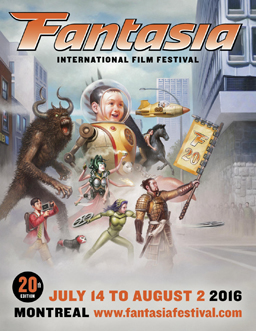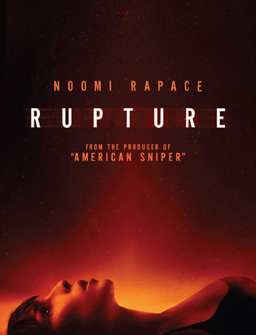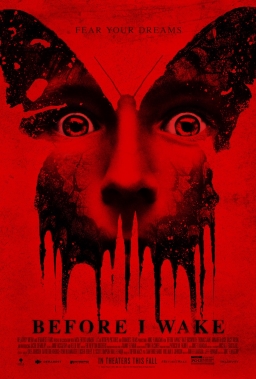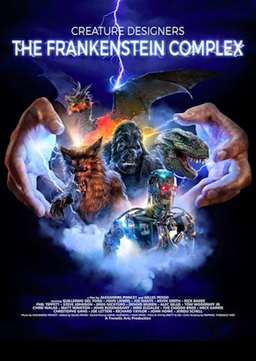Fantasia 2016: An Attempt At A Conclusion
 Having finally posted reviews of all the movies I saw at the 2016 Fantasia International Film Festival, I want by way of conclusion to think about what I’ve learned. I don’t just mean about film, or about the film industry. But about genre, and what genre does, and how it works on film.
Having finally posted reviews of all the movies I saw at the 2016 Fantasia International Film Festival, I want by way of conclusion to think about what I’ve learned. I don’t just mean about film, or about the film industry. But about genre, and what genre does, and how it works on film.
I will start, though, by saying that I feel I have learned a little bit more this year about the way the film industry works. For one thing, I’ve seen how quickly the business moves; a number of works I’ve reviewed have already turned up on Netflix, Amazon, or a video-on-demand service. For another thing, I saw this year how important the length of a movie can be — I saw more films this year than last that pushed the two-hour mark, and if some of them justified that length, others perhaps did not. And: for whatever reason, this year I was struck by the scale of ambition it takes to make a film, in the sense of how many resources it takes and how many moving parts are involved. Even a relatively cheap movie will cost six figures; even a no-budget film probably has a budget, and that budget probably has at least five digits in it. I knew this, of course. But for whatever reason, what I heard in the question-and-answer sessions with the directors this year brought home how much making a movie involves project management; how many moving parts are involved in filmmaking, the sheer scale not just of a major production but even of a very small one.
Still: what really hit me this year was the way that film, and people in film, approached genre. Guillermo del Toro’s impassioned discussions of the importance of genre, horror, and monsters helped frame the festival for me. I found myself watching how a movie, how a story, approached the idea of genre. How it played with conventions, referred to other films, or tried to forge its own path. I think I do tend to focus on these things anyway, but at Fantasia this year the movies I saw seemed to come together to demonstrate something about the nature of genre and moviemaking.
 To start with, I noticed creators occasionally talking about “genre” as synonymous with “conventional” or “commercial” — as a predictable form, particularly in plot terms. I’m thinking a little here of Steven Shainberg talking about his movie Rupture, but especially of Mike Flanagan discussing Before I Wake, a film I thought was not terribly successful. I can understand this thinking, though I don’t see it much these days in discussion of prose. In some ways it feels outdated — as though film’s conception of genre is where the literary world’s was twenty or thirty years ago. I don’t know how widespread the idea of genre as a kind of populist straitjacket is, but I was surprised to see it at all.
To start with, I noticed creators occasionally talking about “genre” as synonymous with “conventional” or “commercial” — as a predictable form, particularly in plot terms. I’m thinking a little here of Steven Shainberg talking about his movie Rupture, but especially of Mike Flanagan discussing Before I Wake, a film I thought was not terribly successful. I can understand this thinking, though I don’t see it much these days in discussion of prose. In some ways it feels outdated — as though film’s conception of genre is where the literary world’s was twenty or thirty years ago. I don’t know how widespread the idea of genre as a kind of populist straitjacket is, but I was surprised to see it at all.
That said, what I also realised this year is that there’s a different kind of genre hierarchy in film. I’m used to thinking of genre as, basically, science-fiction, fantasy, and horror, roughly in that order of prominence; and then mystery, romance, thriller, perhaps western, maybe historical fiction or war — but by that point the idea of “genre fiction” is shading into “mainstream fiction.” What I realised, because sometimes I don’t grasp obvious things until decades after I should have, is that in film things are different: horror is much more prominent. There are ‘horror directors,’ but I can hardly think of anyone who’s a ‘science-fiction director’ and relatively few ‘fantasy directors.’ And if in prose it’s convenient to associate science-fiction, fantasy, and horror under the term ‘fantastika,’ or even just the word ‘genre,’ in film crime and mystery stories are much more significant.
I think there are some obvious reasons for that, starting with budget. It’s usually a lot cheaper to set your story in the real world as opposed to a far-flung future or a convincing magical realm. And in horror things tend to happen in the shadows, meaning you can hide your monster until the end — famously, Spielberg was so dissatisfied with the fake shark in Jaws he kept it offscreen until near the end of the movie, which ended up creating a much more suspenseful film.
 Which is also key, I think. Suspense. Atmosphere. Perhaps more than the other branches of fantastika, horror has a specific tone and emotional terrain. So as a director you can play with that range of affect. But I suspect horror also works particularly well as drama, as a relatively brief film experience filled with conflict and consequences: as a scriptwriter, you can play with tragedy.
Which is also key, I think. Suspense. Atmosphere. Perhaps more than the other branches of fantastika, horror has a specific tone and emotional terrain. So as a director you can play with that range of affect. But I suspect horror also works particularly well as drama, as a relatively brief film experience filled with conflict and consequences: as a scriptwriter, you can play with tragedy.
A novel has to have peaks and valleys, but the experience of watching even a long movie is much more condensed. It happens in one sitting. So the structure of the story becomes more important, the Western three-act pattern machined to a razor keenness; and horror builds nicely within that structure. There’s an inherent drama. Inherent conflict, too. Stakes are high, with lives and souls in the balance.
Perhaps the ritualistic sense of at least some horror comes into play here as well. If horror fits nicely into typical dramatic structure, it also often creates (or tries to create) a sense of the transgressive. Whether by depicting violence, or by presenting unsettling or confrontational ideas, horror has the ability to shock. In a form like film, often governed by a tight architecture, that shock, that breaking-down of traditions and conventions, can have a powerful effect. The ritual of the dramatic form allows for a breaking of the norm; for things to go in ways you don’t expect, for abysses to open beneath your feet.
I mentioned that Guillermo del Toro’s discussion of horror got me started thinking along those lines, and I found myself also thinking often during the festival of his words about monsters. The Creature Designers documentary helped bring out the importance of monster-making to film. Movies present the recorded moving image (and, usually, sound); tricking the recording device into capturing the image you want, so that it seems to show something other than what is actually there, has been important ever since magician Georges Méliès started pushing the limits of film art. Done right, movies can show the truth of monsters in a way no other medium can.
We see monsters in a film. We hear them speak or roar. There is a dreadful reality to them that we cannot get from prose or even the still image of a comic. Of course one can say that prose or comics work differently, and the active use of the imagination can be even more powerful; but my point is that movies have a specific formal quality that means they do something significant with monsters. They show us monstrosity in a specific way. And the fact that we often end up identifying with the monsters nevertheless shows us something about ourselves.
 I’m not just writing here about otherness. Monsters can represent the other. But if the process of identification with a character in fiction tends to undermine the distinction between subject and object, the nature of a monster means, maybe, that we see ourselves as the other. On the other hand, a monster is (or at least can be) the representation of our sense of alienation, our sense of frustration at a world that hardly seems shaped for us. We watch them transgress against the moral sense we have grown up with or have come to feel. And, often, at some level, we conspire with them as they do. There is a kind of human attraction to power.
I’m not just writing here about otherness. Monsters can represent the other. But if the process of identification with a character in fiction tends to undermine the distinction between subject and object, the nature of a monster means, maybe, that we see ourselves as the other. On the other hand, a monster is (or at least can be) the representation of our sense of alienation, our sense of frustration at a world that hardly seems shaped for us. We watch them transgress against the moral sense we have grown up with or have come to feel. And, often, at some level, we conspire with them as they do. There is a kind of human attraction to power.
I think this is true across cultures. I think The Inerasable or Under the Shadow work the same way, even as the monsters in those films remain evil, remain antagonists, remain frightening. I think it’s all clearer in something like the Parasyte films, where a monster joins the hero to fight monsters. I feel like I saw many different kinds of monsters this year: besides the djinn, besides all the many kinds of ghosts, there were mermaids (or sirens, if you prefer), a tengu, aliens, supernally-evolved humans, genetically modified bug people, an urban legend from the internet, and even a cursed film that drove its audiences mad. And all these monsters drew the audience into the story instead of alienating. The monster is what makes a monster movie special. That’s why it’s called a monster movie.
Del Toro talked about the monster as a holy figure. He’s not wrong. I think the distinction between genre that works and genre that straitjackets a film is vision: a storyteller who uses the material they work with as a way to get their vision across, as a way to dig into the matter they need to communicate, as opposed to a storyteller using a hand-me-down form for lack of anything better. A genre is a set of conventions, but those conventions can be so twisted, revised, challenged, undermined, or deployed in new ways that in the end there’s nothing conventional about it. Genre, I have learned, is a way to unite vision and story, to twine the two about one other so that they become indissoluble and indistinguishable. Genre is a way to make new myths. The transgression of horror, the redemptive figure of the monster, are ways of talking about sacrifice — all the victims in horror films are sacrifices, and the terror we feel is panic: the mental state caused by the god Pan. Sacrifice, etymologically, derives from “to make sacred.” The sublime is linked to terror. So this too is what I have learned: the dark auditorium of the cinema is not Plato’s cave of error; it is the subterranean Mithraeum, the temple of a mystery religion in which we learn true things that we cannot set down in words.
(You can find links to all my Fantasia 2016 diaries here.)
Matthew David Surridge is the author of “The Word of Azrael,” from Black Gate 14. You can buy his first collection of essays, looking at some fantasy novels of the twenty-first century, here. His second collection, looking at some fantasy from the twentieth century, is here. You can find him on Facebook, or follow his Twitter account, Fell_Gard.